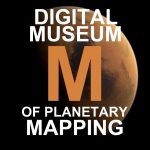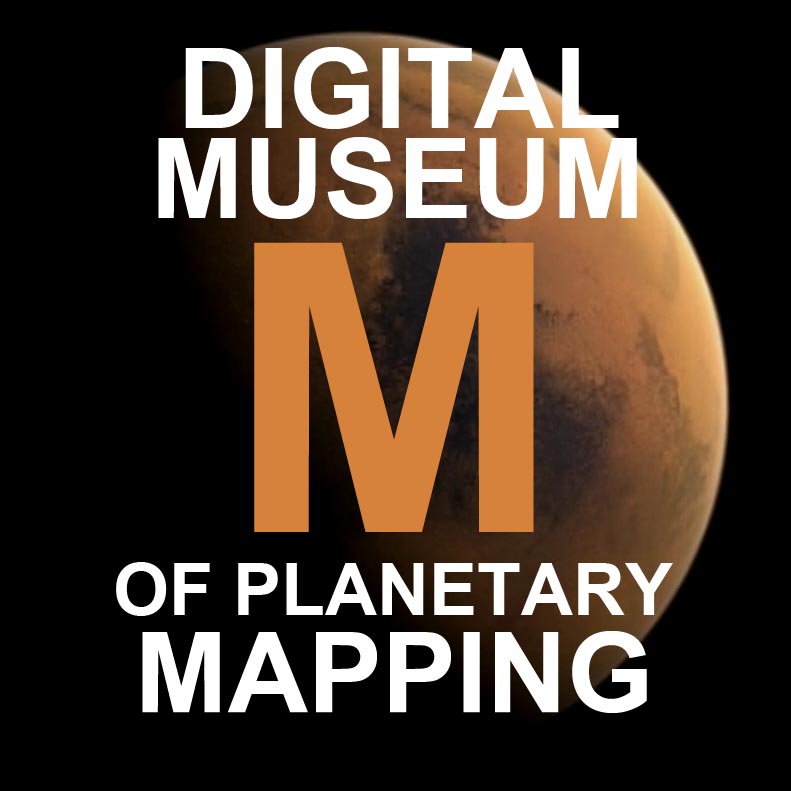IAU 1964
TRANSACTIONS OF THE IAU : VOLUME XIIB
( the following is excerpted from the book published by Academic Press in 1966)
PROCEEDINGS OF THE TWELFTH GENERAL ASSEMBLY (HAMBURG, 1964)
Edited by
J.-C. PECKER
General Secretary of the Union
from pp. 202-205
AN EXTENDED FORM OF BLAGG AND MÜLLER’S SCHEMA OF LUNAR NOMENCLATURE
D. W. G. Arthur
The lunar nomenclature proposed by the Lunar and Planetary Laboratory of thc University of Arizona is a revised and extended form of that of Blagg and Müller, which was authorized by the Union in 1932. We have attempted to eliminate certain illogical and inconvenient situations in the Blagg and Müller scheme, but all major changes are restricted to the extreme limb regions where the Blagg and Müller scheme, and for that matter, all previous maps, are somewhat unrealistic. The scheme is based on a lengthy and thorough survey of the best available photographs and is embodied in the following documents.
(i) The System of Lunar Craters, Communications of the Lunar and Planetary Laboratory. This work is in four parts with a catalog and map for each of the four lunar quadrants.
(ii) Lunar and Planetary Designations, Arthur and Agnieray, University of Arizona Press. A two-color map in four parts.
(iii) The Rectified Lunar Atlas, Whitaker et al. University of Arizona Press. This gives the names but not the letters.
(iv) The L.A.C. lunar topographic maps at 1: 1 000 000 of the Aeronautical Chart and Information Center of the U.S. Air Force. These are available by subscription.
The above indicates that the proposed scheme is not subject to the drawback of limited distribution, which somewhat hampered the diffusion and acceptance of the Blagg and Müller nomenclature.
As already stated, no major changes were made in the central areas of the disk, except the deletion of a few names which were duplicated elsewhere. In these areas we merely intensified the existing scheme by adding additional letters. The situation near the limb is basically different in that recent intensive cartographic work, coupled with a changeover to conformal projection, makes the Blagg and Müller scheme quite inadequate for contemporary lunar cartography. To eliminate some serious and widespread difficulties, some 6o new names were added in the extreme limb regions. Almost all of these fall in areas which are very poorly represented in all the older maps.
The demands of tradition and continuity were given full weight throughout, even though these often prevented the development of a completely logical scheme of lunar nomenclature.
Table I : New names
| Name | Approximate position of center | Diameter (Unit 0.001 R) | Previous identifications | |
| Abel | 85.5 E 34.5 S | 50 | Abel (Franz 225) | |
| Amundsen | 93.0 E 84.0 S | 55 | Amundsen (Wilkins and Moore) | |
| Aston | 87.5 W 33.0 N | 25 | Ulugh Beigh E (IAU 1897a) = (Franz 795) | |
| Baade | 82.5 W 45.0 S | 26 | Inghirami D (IAU 2251) = Hall (Franz 901) |
|
| Balboa | 83.5 W 19.0 N | 40 | – | |
| Balmer | 70.0 E 20.0 S | 75 | – | |
| Banachiewicz | 80.5 E 5.5 N | 63 | – | |
| Barnard | 86.5 E 29.5 S | 60 | – | |
| Belkovich | 87.0 E 61.5 N | 105 | – | |
| Bohr | 86.5 W 12.5 N | 50 | – | |
| Boltzmann | 96.0 W 75.5 S | 40 | – | |
| Boole | 85.0 W 64.0 N | 37 | – | |
| Boss | 89.5 E 46.0 N | 27 | – | |
| Brianchon | 85.0 W 74.5 N | 72 | Carpenter C (IAU 1695) = Anaximander d (Franz 547) | |
| Bunsen | 85.5 W 41.0 N | 44 | – | |
| Byrd | 10.0 E 85.0 N | 52 | Gioja A (IAU 1018a) | |
| Cannon | 81.5 E 20.0 N | 31 | Alhazen F (IAU 25) | |
| Cremona | 86.0 W 67.5 N | 55 | – | |
| Dalton | 84.5 W 17.0 N | 35 | – | |
| Desargues | 73.5 W 70.5 N | 55 | Anaximander C (IAU 1693) (misprinted? as Anaximander) = Anaximander p (Franz 555) | |
| De Sitter | 38.0 E 79.5 N | 37 | Euctemon J (IAU 999c) | |
| Drygalski | 82.0 W 79.5 S | 97 | Casatus G (IAU 3294a) = Drygalski (Fauth) = Cabeus (Franz 839)= Casatus (Schr.) | |
| Dubiago | 70.0 E 4.5 N | 21 | Neper A (IAU 7) | |
| Eddington | 72.0 W 22.0 N | 77 | Otto Struve A (IAU 1902) | |
| Einstein | 88.5 W 16.5 N | 100 | – | |
| Fermi | 89 .5 W 7.5 N | 48 | – | |
| Gibbs | 84.5 E 18.5 S | 40 | Hecataeus D (IAU 4752) | |
| Gilbert | 76.5 E 3.5 S | 63 | – | |
| Gill | 77.0 E 63.5 S | 35 | – | |
| Goddard | 89.0 E 15.0 N | 43 | Mare Marginis k (Franz 1274) | |
| Hale | 90.0 E 74.5 S | 48 | – | |
| Hamilton | 84.0 E 42.5 S | 32 | Marinus K (IAU 4559a) = Kelvin (Franz 212) |
|
| Hartwig | 80.5 W 6.5 S | 50 | Possibly Riccioli E (IAU 1964) | |
| Hayn | 84.0 E 64.5 N | 46 | Strabo G (IAU 424e) | |
| Hedin | 76.5 W 3.0 N | 74 | Sven Hedin (Fauth) | |
| Hermite | 80.0 W 86.0 N | 65 | – | |
| Hubble | 86.5 E 22.0 N | 42 | Plutarch A (IAU 26a) = Plutarch (Franz 481 |
|
| Jansky | 90.0 E 8.5 N | 35 | – | |
| Jeans | 94.0 E 57.0 S | So | Mare Australe q (Franz 1357) | |
| Kapteyn | 70.5 E 10.5 S | 29 | Lapeyrouse B (lAU 4769) | |
| Krasnov | 80.0 W 30.0 S | 23 | Lagrange F (IAU 2228)=(Franz 837) | |
| Lamarck | 70.0 W 22.5 S | 55 | Southern part of Darwin (lAU 2081) | |
| Lamé | 64.5 E 14.5 S | 46 | Vendelinus C (IAU 4699) | |
| Langley | 86.5 W 51.0 N | 37 | Regnault (Schm.) | |
| Liapunov | 90.0E 26.5 N | 36 | Timoleon (Schm.) | |
| Lyot | 84.0 E 50.5 S | 63 | Brisbane G (IAU 4540b) | |
| Markov | 62.5 W 53.5 N | 24 | Oenopides A (IAU 1713) | |
| Moseley | 91.0 W 21.0 N | 45 | – | |
| Nansen | 88.0 E 80.5 N | 60 | Contains Franz’s points 468 and 469 | |
| Pascal | 68.5 W 74.5 N | 63 | Carpenter D (IAU 1361 and 1694) = Anaximander c (Franz 546) |
|
| Peary | 20.0 E 87.5 N | 50 | Gioja B (IAU 1018b) | |
| Planck | 87.0 W | 8.0 N | 45 | – |
| Poncelet | 54.0 W 75.5 N | 40 | Anaximenes F (IAU 1359a) = (Franz 562) | |
| Rayleigh | 89.5 E 29.0 N | 52 | – | |
| Riemann | 87.5 E 39.5 N | 60 | – | |
| Rontgen | 89.0 W 33.0 N | 56 | – | |
| Russell | 75.5 W 26.5 N | 55 | Northern part of Otto Struve (IAU 1901) | |
| Schlüter | 83.5 W 6.0 S | So | Malvasia (Schr.) Floor contains Mare Hiemis (lAU 1975a). Possibly=Riccioli A (IAU 1962) | |
| Scott | 47.0 E 82.5 S | 6o | Scott (Wilkins and Moore) | |
| Shaler | 85.0 W 33.0 S | 22 | – | |
| Stefan* | 94.0 W 72.0 S | 78 | – | |
| Stokes | 89.0 W 72.0 N | 35 | – | |
| Sylvester | 79.5 W 82.5 N | 35 | Philolaus p (Franz 730) | |
| Volta | 85.0 W 53.5 N | 65 | – | |
| Wright | 86.5 W 31.5 S | 22 | – | |
| Joliot-Curie | 93.0 E 25.5 N | 82 | Note: Floor contains Mare Novum (IAU 140a}, which is Joliot-Curie of the Soviet Lunik III photography. |
*Possibly not a true formation.
Explanation of symbols
IAU : Blagg and Müller, Named Lunar Formations, 1935
Schm. Schmidt, J., Charte der Gebirge des Mondes, 1878
Schr. Schröter, Selenotopographische Fragmente, 1791 and 1802
R = lunar radius
Table 2 : Nomenclature revisions
Deletions
J. Cassini, Mare Novum, W. Pickering, Schneckenberg
Reinstatement
Additions (see also Table I)
Rupes Cauchy, Rupes Kelvin, Rupes Liebig, Vallis Baade, Vallis Inghirami, Mare Cognitum
Changed outlines
Anaximander, Darwin, Hecateus, Meton, Struve
Changed identifications
Brisbane, Regnault, Ulugh Beigh
Spelling changes etc.
La Caille, La Condamine, La Hire, La Pérouse, Le Gentil, Le Monnier, Le Verrier, Regnault, Mare Struve, Struve
Latinizations
Mons Argaeus, Montes Apenninus, Montes Carpatus, Montes Caucasus, Montes Cordillera, Montes D’Alembert, Montes Doerfel, Montes Haemus, Montes Harbinger, Montes Hercynii, Montes Jura, Montes Leibnitz, Montes Pyrenaeus, Montes Recti, Montes Riphaeus, Montes Rook, Montes Taurus, Montes Teneriffe, Vallis Alpes, Vallis Rheita, Vallis Schröteri, Rupes Altai, Rupes Cauchy, Rupes Recta, Rima Ariadaeus, Rima Byrgius, Rima Hyginus, Rima Sirsalis, Prom. Fresnel, Prom. Kelvin.
Une discussion genérale à lieu a laquelie participent notamment MM. Arthur, Dollfus, le Père Hoyden, Hopman, Kopal, Martynov, Menzel, Rackham, Rösch, Shoemaker, Tombaugh, Wildt.
Ii est recornmandé d’éviter de faire précéder les noms propres par les initailes de prénoms lorsque cellos-ci ne sont pas nécessaires.
Le rapport précédent est adopté.
L’impact de la sonde spatiale Range VII dans la région sombre lunaire elliptique comprise entre les cratères Guéricke, Bompland, Darney et Montes Riphaeus a attiré l’attention sur le fait quo cette mer n’était pas clairement dénommée.
Le Professeur Kuiper propose deux noms possibles: Mare Exploratum ou Mare Cognitum.
Apres one attentive discussion, la désignation Mare Cognitum est retenue.
Le comité `Nomenclature et Cartographic de la Surface Lunaire’ est maintenu avec sa composition initiale complétée par le Dr Arthur.

